How to Choose a Fishing Reel: Numbers, Gear Ratios, etc.
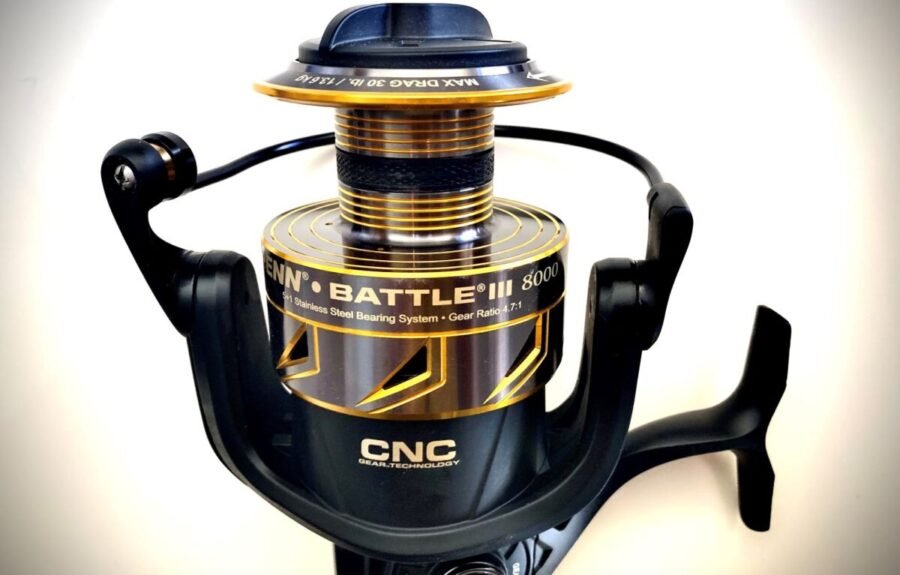
Choosing a fishing reel can be a little tricky with so many options out there. This article will walk you through just about everything you’ll need to consider in figuring out how to choose a fishing reel. Here’s a quick overview of the things you might come across/be wondering. But first, a quick brainteaser. I challenge each of you to correctly answer the brainteaser after carefully reading the entire article.
Angler’s Challenge – A Brainteaser:
You’re an experienced angler and you’re bringing your buddy fishing with you for the first time. Your reel has a gear ratio of 6.2:1 and his reel has a gear ratio of 4.4:1. You’re both working the same exact lure with the same exact rod and line. An hour into the session, you have zero fish and your buddy has 5 fish. Again, you’re both using the same exact lure.
You ask how he’s retrieving his lure and he shows you the exact retrieve he’s using. It’s a slow steady retrieve. No pauses, no jerks, just slow and steady. Now, I know it might be impossible to match someone’s exact retrieve, but let’s assume, for a second that you’re now retrieving your lure at the exact rate your buddy is (measured by rotations of the reel handle per second). You’re casting is identical and you’re buddy (being a nice guy) lets you take his exact spot and cast exactly where he was casting.
Another hour goes by and your buddy has caught another 5 fish in the spot that you just moved from. You? You’ve caught nothing still.
Assuming the reason your buddy is catching more fish than you can be directly traced back to the speed at which your lure is traveling, is your buddy’s lure moving faster or is yours? Why?
Now the Article: How to Go About Choosing a Fishing Reel
- Matching your reel to your rod
- Spinning reel vs. conventional reel
- What do the numbers on a fishing reel mean?
Matching Your Reel to Your Rod
The first thing you should consider is matching your surf fishing reel to your surf fishing rod. On you’re rod, you’ll typically see a rating that gives you a range of pound-test. It could be 10-20, 6-12, or anything similar. Typically, you should stick with line that is within this range in terms of pound-test (as that’s what the manufacturer has rated the rod to be capable of handling) unless you’re experienced enough to venture outside of those standards.
For example, my sharking rods are rated for less than the pound-test fishing line that I use, but I know my set-up is exactly what I want/need, and I’m also using braided line which changes a little bit… mostly in terms of the reel.
You should get a reel that matches your rod. So, if your rod indicates that you should have line between 10-20 pounds, you should probably get a reel that will hold your desired amount of line per pound-test. It’s as simple as that. Naturally, if you follow those guidelines, you’ll end up with a balanced set-up.
Spinning Reel vs. Conventional Reel?
Alright, so first and foremost, you should know the difference between a conventional fishing reel and a spinning fishing reel and which one you need. The main differences can be summed up by just a few bullet points.
Some Differences:
- Spinning reels hang underneath the rod with the rod guides facing down while conventional reels are mounted atop your rod with the rod guides facing up.
- The spool of a spinning reel is fixed and line is gathered/released in a horizontal manner whereas the spool of a conventional reel gathers/releases line vertically.
- Conventional reels typically offer more line capacity.
- Conventional reels are designed for max efficiency when muscling in a fish.
*Baitcasting reels are actually a different type of reel than conventional reels. For the purpose of this article, picture a baitcaster as being a conventional reel with added emphasis on being designed to cast more conveniently.
When to Use Which Type of Reel:
Spinning reels have become much more versatile and popular in recent years as line technology has improved alongside it. Some anglers will tell you one is easier to use over the other, but it really comes down to what you’re used to. If you have zero experience using a fishing reel, I would recommend a spinning reel from this list of the best reels for surf fishing.
There are certain styles of fishing that almost “require” conventional reels. For deep sea fishing, trolling, kite fishing, etc., a conventional reel that can hold a ton of line and apply a lot of torque is likely the way to go.
Spinning reels are more versatile (I think they’re more user friendly too), and it’s generally accepted that spinning reels are used more often when fishing for relatively smaller fish as opposed to big game fish, although you can can still catch massive fish on spinning gear. For surf fishing, lake fishing, even kayak fishing, and all sorts of other styles, you kind of have the option to use whichever you prefer.
Some people (like me) simply prefer one over the other. Throwing lures, baits on Carolina rigs, fly-lining live bait from a kayak, bottom fishing offshore from a kayak, shark fishing from the surf, everything for me… I’ll use a spinning reel. Other anglers are the exact opposite and might choose either a conventional reel or a baitcasting reel, but that’s okay! Use what works for you.
What do the Numbers on a Fishing Reel Mean?
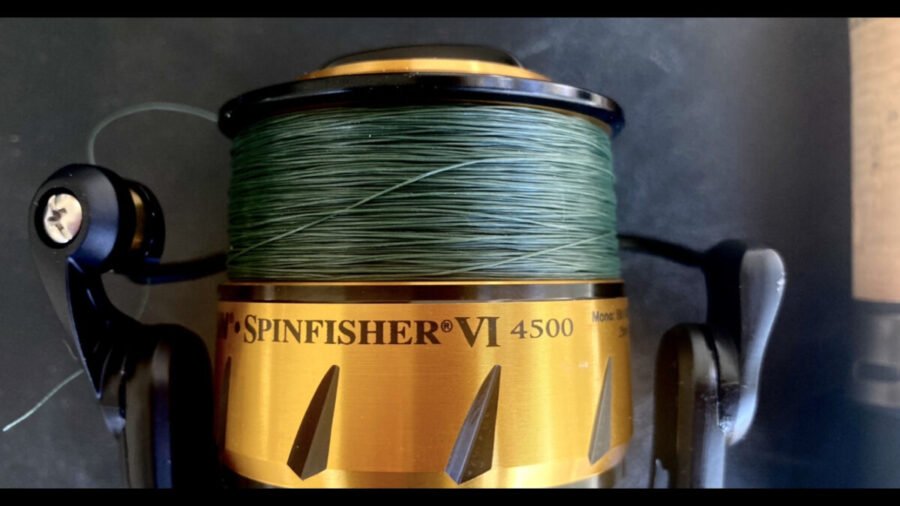
What do all those numbers on your fishing reel mean? For the purposes of a spinning reel, you might see numbers like:
- Reel Size: 4500 or 3500 or 4000… etc.
- Line Capacity: Braid: 15lb / 390 yds • 20lb / 320 yds • 30lb / 250 yds
- .23mm / 355m • .25mm / 290m • .30mm / 230m
- Gear Ratio: 6.2:1
- Recovery Rate: 40-inches per turn
- Bearing Count: 5+1 Bearing System
- Model #: SSVI4500
So what the heck do all the numbers on your spinning reel even mean? Let’s go over it all.
What does 4000 mean on a spinning reel?
The first thing you’ll likely see is a number following the name of the reel. In this case, I’m outlining a Penn Spinfisher VI 4500. That number, “4500” designates the size of the reel. Spinning reels are typically found anywhere between 1000-8000 but can go as high as an angler wants if they’re willing to pay the money. Sometimes you’ll see the zeros taken off depending on the brand of a reel. So, for example, a reel that has the number 3 or 30 or 300 or 3000 will likely imply the same size. All brands are slightly different, but can generally be relied upon.
A 3000 series reel is bigger than a 2000 series, a 4000 is bigger than a 3000 and so on. Most reels that are of decent quality will be distinguished by a number to determine its size. Many cheap reels, however, have no such number to distinguish it.
Of all the things to consider when figuring out how to choose a fishing reel for your rod and style, this is extremely generic and extremely important. Using the wrong sized reel can hinder your results.
Line capacity numbers on a fishing reel
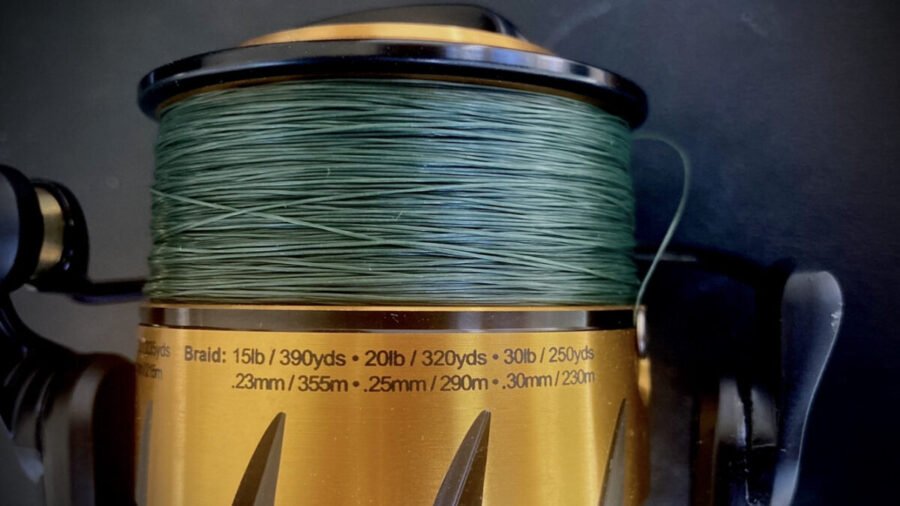
The next thing you might notice will be the line capacity specs. This is another important aspect to consider as you’ll want to match your reel to the pound-test of line which you’ll be using. Generally, the bigger the reel size, the more line capacity you’ll have on your spool. My Spinfisher VI 4500, for example has the following specs for line capacity:
- Braid: 15lb / 390 yds • 20lb / 320 yds • 30lb / 250 yds
- .23mm / 355m • .25mm / 290m • .30mm / 230m
The top text overviews how much braided line I can fit on the reel’s spool per pound-test. So, if I use 15-pound test, I can fit 390 yards. You can see that as the pound-test of the fishing line increases, the line capacity (or the amount of line in length that you can fit on that spool) decreases. This is because fishing line gets thicker as its pound-test increases and with thicker line, you can fit less of it on a spool.
Braid Capacity vs. Mono Capacity
You’ll typically see the line capacity for mono (monofilament) either to the left or right of the braid capacity. If you look closely at the image above, you can see the mono specs were left of the braid specs.
Immediately below the braid/mono capacity specs, you’ll see the bottom bullet point text we listed above. This is a valuable set of specs to have because not all braid and mono types and brands are the same thickness per pound-test. Some extremely high quality braids will be thinner than average braids or their cheaper counterparts. If you’re using an off-brand, this is helpful data to know as it will help you to fill your spool with the proper pound-test depending on how much line you’d like to have.
*It’s important to understand that sometimes these specs on your fishing line are listed in inches-diameter as opposed to millimeter-diameter. Also, make sure you know if you’re looking at meters, yards, or feet when matching your line to your spool.
Gear ratios
So what is a gear ratio in a fishing reel? Simply put, it’s the number of rotations the bail makes around your spool (in a spinning reel) or how many rotations your spool makes (in a conventional/bait casting reel) per 1 turn of the handle (or crank). Each reel has what’s called a drive gear and a pinion gear. They interact with each other to allow the process of “reeling”. If you take the number of teeth on the drive gear (larger) and divide it by the number of teeth on the pinion gear (smaller), the result is the gear ratio.
So, with a gear ratio of 6.2:1, my bail will rotate 6.2 times for every one full turn of the handle. The bail making 6.2 rotations is effectively the same thing as the spool making 6.2 rotations, meaning the line is wrapped 6.2 times over the spool.
A typical gear ratio for a fishing reel will fall between 5.2:1 and 6.2:1. When the ratio falls below 5.2:1, it’s generally considered a slow or low gear ratio where as if it falls above 6.2:1, it’s considered high or fast.
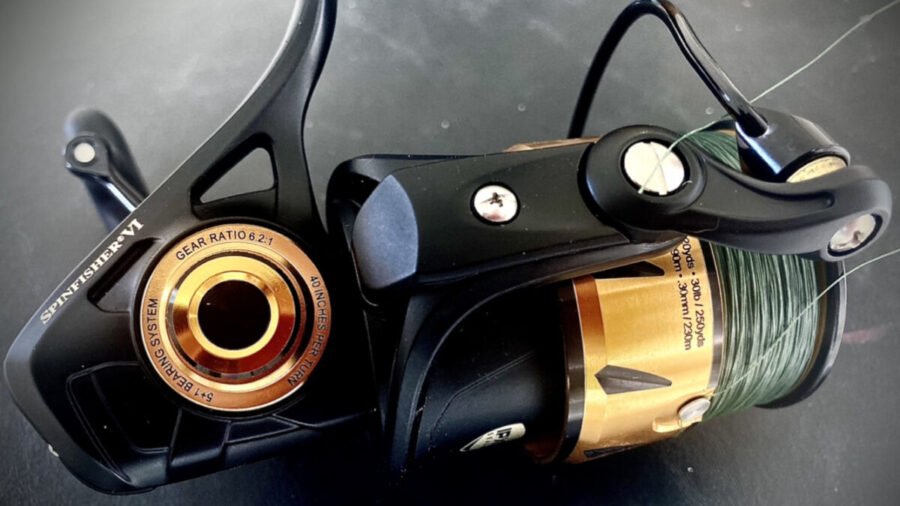
When would you use a high gear ratio?
Generally speaking, lower gear ratios equate to more torque and power while high gear ratios equate to more speed. The two variables have a direct negative correlation to one another.
Well, generally speaking, high gear ratios are preferred by anglers who need to present their baits in quick or intricate ways. Bass fishermen commonly use high gear ratios when they work crank baits and other flippin’ and pitchin’ methods as they need to quickly catch up to their baits to avoid slack in the event of a bite.
For reference, my light tackle and lure fishing reels typically have a gear ratio of 6.2:1 while my shark fishing rod has a gear ratio of 4.7:1.
When would you use a low gear ratio?
It really comes down to personal preference, and if your fishing frozen, dead, or live bait, it likely won’t matter either way. One benefit to a low gear ratio though, is that it provides more torque which helps when you’re fighting large fish. This is why you’ll see larger reels (and reels that are meant to reel in very big fish) with lower gear ratios.
By no means does this factor not matter, but it isn’t one of the likely factors of picking the right reel to have a huge effect on your fishing experience if you’re just starting out.
Line recovery rate
Another often over-looked factor when deciding on a fishing reel is the line recovery rate. This is defined as the amount of line (in length) that a reel can recover back onto it’s spool with one turn of the handle.
This aspect of a fishing reel is the reason why a gear ratio, in and of itself, does not solely determine how fast an angler can retrieve their lure. In other words, two reels with equal gear ratios can recover line at different rates/speeds. The missing variable? Spool diameter. Bottom line, line recovery rate should be just as important to you, as an angler, if you care about gear ratio for the purposes of quick retrieves.
The example that blew my mind:
“For example, a 4.4:1 gear ratio reel with a 2-inch-diameter spool will recover 13.8 inches of line per turn of the handle. A 6.2:1 ratio reel with a 1.5-inch-diameter spool will recover less than 11 inches of line per handle turn. Therefore, it is the size of the spool in combination with gear ratio that most affects the recovery of the line. In the aforementioned example, the 6.2:1 reel would be considered a high-speed model based on its numerical gear ratio. But, by comparison, the “slower” 4.4:1 reel will move a lure through the water at a faster speed per turn of the reel handle. Of course, if that 6.2:1 gear ratio reel were equipped with a 2-inch-diameter spool, it would take up almost 19.5 inches of line per handle turn, which is much greater than the 4.4:1 reel.”
Answer to the brainteaser: Your buddy’s lure was moving faster because his spool diameter was 2-inches while yours was 1.5-inches.
Subscribe to our newsletter!
References
Credit to: Ken Schultz’s Fishing Encyclopedia: Worldwide Angling Guide, © 2000 Ken Schultz.
Used by arrangement with John Wiley & Sons,Inc.,(Fish illustrations © 1999 David Kiphuth.)
Buy Ken Schultz’s encyclopedia | Retrieved from: https://www.thebassholes.com/threads/gear-ratios-ipt-recovery-rates-and-reel-power-expalined.30832/
Another really good article that outlines the relationship between gears, gear ratios and line recovery rate can be found here: https://www.bassfishingandcatching.com/fishing-reel-gear-ratio.html.
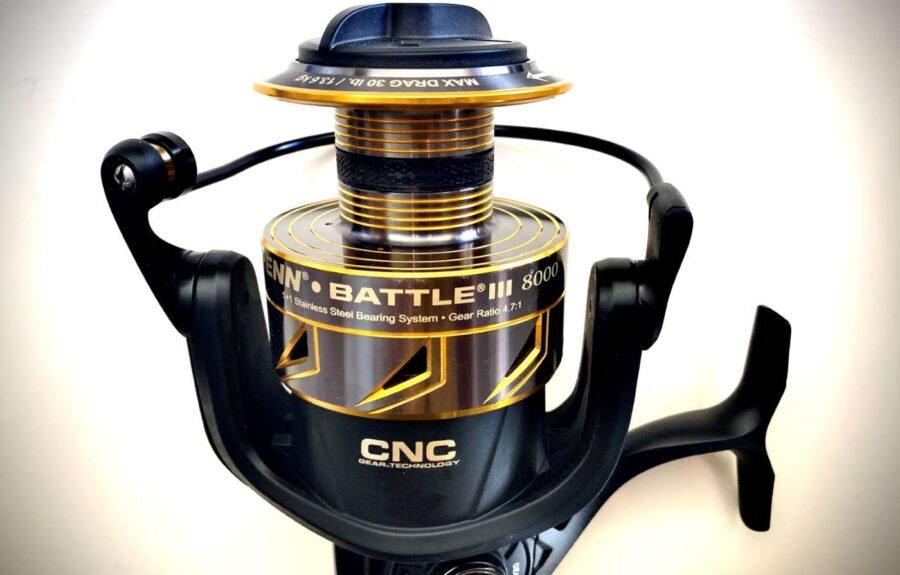
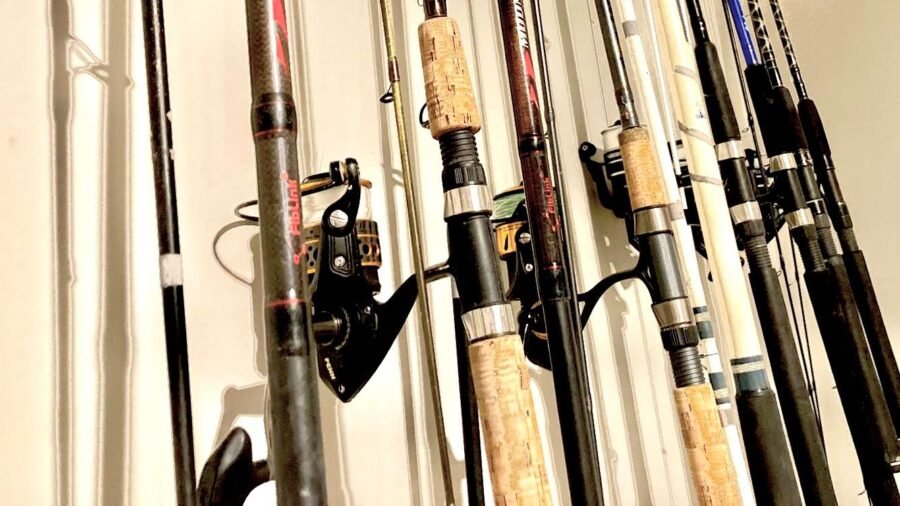

Thank you Nick. Very good information to know.Never gave it a lot of thought. I fish with the 4000s and 6000.
Every time I write one of these longtailed informational articles, I think I learn just as much as my readers do. Lots of good info out there!
Great info Nick! That clarifies/corrects somethings I misunderstood.
Thanks, Bob. It did the same for me.
Great information, Nick, thank you! I find myself fishing more and more with my bait casting set-up since committing to getting more comfortable with it a year or so ago (yes, it has taken me that long!). In addition to your points, I find that my spinning reels are generally comparatively hassle free – no back lashes and require much less maintenance. But I’ve come to realize that I really enjoy the challenge of trying to achieve longer casts by frequently cleaning/tuning up my bait caster and fishing it with little or no brake systems. Learning how to do this as well as improving my casting motion, which is required as you can imagine, has taken time and practice.
I agree with you – there is clearly no wrong answer here, just wanted to add that some may be able to cast farther with a bait caster or conventional reel if this is desired, and if willing to put in the time and effort to learn the nuances of this. Doing so certainly doesn’t necessarily equate to catching more fish, but can add another interesting element to surf fishing/casting as it has for me.
100% agree. And I’d almost go as far to say if you can utilize the baitcaster well enough to the point that you can reach structure and good fishing spots with your improved range (in comparison to spinning gear), then it might just equate to catching more and bigger fish. Good points, Kurt.
Nick, Before reading your article, which is a good guide for beginners, and I did learn a little, my guess would’ve been the 4.4:1 reel is slower. After reading, I would say the 4.4:1 was faster. The scenario did not mention the spool diameters, but I never took that into account in the past – I learned something today.
FYI – Last Friday at Pismo report;
I fished from around 10 AM to almost 5, no fish caught and no hits until around 2 – 4. Sand crabs are still there and the only bait that was hit (Mussel meat, Gulp sandworms were tried – the one clam I dug up was tempting but too small {<4.5"} to keep). Crabs were up to as big as the end of my thumb and most are hard shelled with a couple being softer. Aside from the 1 or 2 soft crabs, I believe all the other hits (smaller sized crabs – fish didn't touch the big ones) only took the tail end and left the rest.
The quick hits were a bit frustrating, but still a great day on the beach, especially with the camping closed due to the King Tide.
Good to hear, Ronald. And thanks for the report. No sand crabs for me down in SD although I haven’t looked much as I’ve been putting some time into the swimbaits and hard plastics.